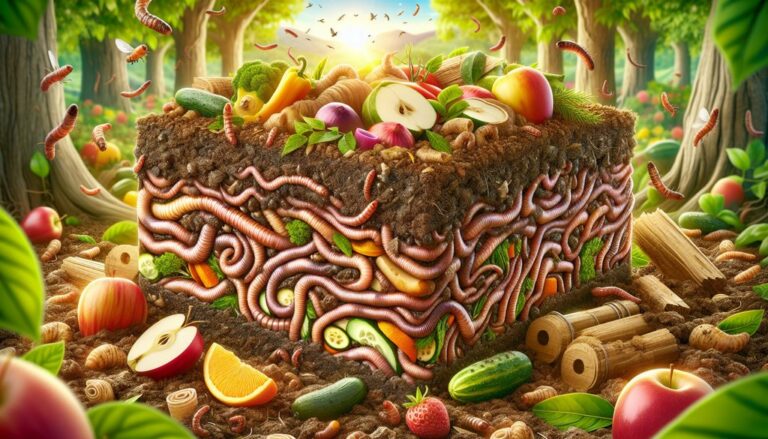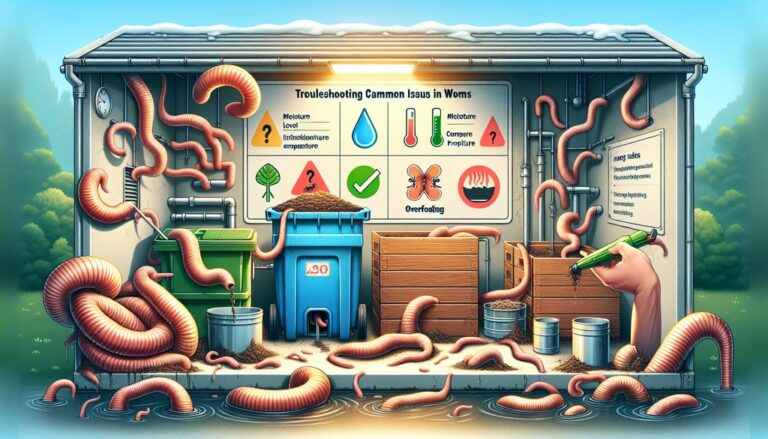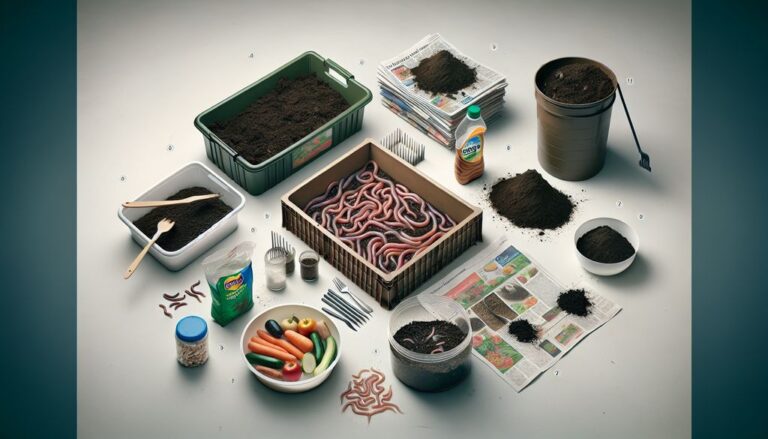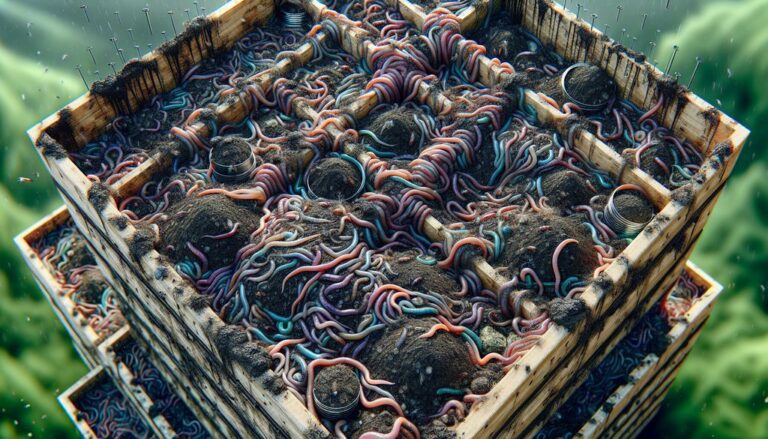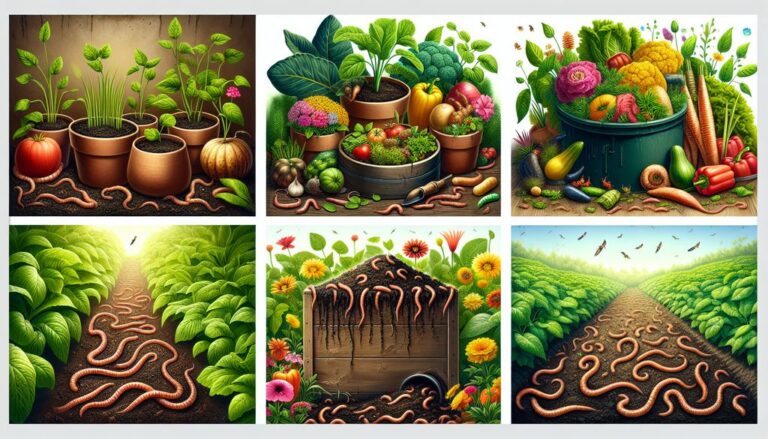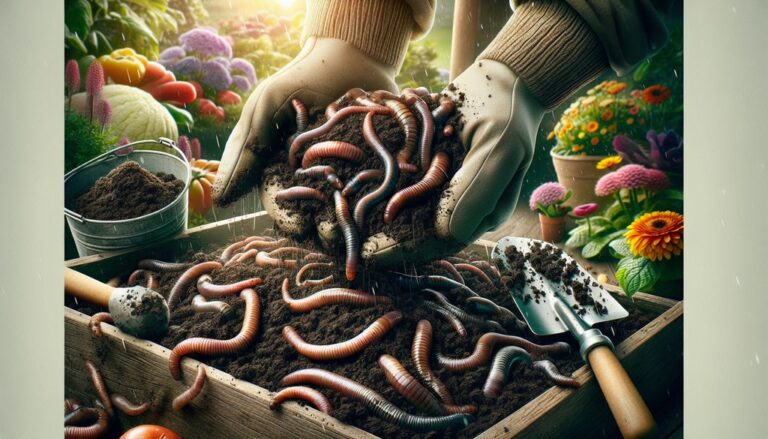The practice of composting waste from communities plays a significant role in the transition towards a circular economy. This process involves transforming household waste, green waste, and sewage sludge into valuable organic amendments, reducing environmental impact, and generating benefits for agricultural soils. The careful balance and preparation of household waste, waste maturation, and waste recovery are essential components of community waste composting. However, challenges in composting urban waste, such as the recovery of urban sludges, integration of green waste, and treatment of residual household garbage, must also be addressed to achieve sustainable composting practices.
Key Takeaways
- Composting waste from communities is vital for the transition to a circular economy
- Balancing and preparing household waste is essential for uniform decomposition
- Waste maturation is crucial for obtaining rich, fertile compost
- Composting transforms waste into natural fertilizer for sustainable agriculture
- Challenges in composting urban waste require careful recovery and treatment
Understanding Community Waste Composting
Balance and Preparation of Household Waste
Composting household waste is a fundamental step in embracing a circular economy, where waste is not an endpoint but a beginning. Proper balance and preparation of household waste are crucial for successful composting. This involves a meticulous sorting process to remove non-compostable materials and adjusting the waste’s size, structure, and chemical composition to promote uniform decomposition.
The process begins with sorting the waste into categories that can be composted effectively. Here’s a simple guide to get started:
- Organic kitchen scraps (e.g., fruit and vegetable peels)
- Yard trimmings and green waste
- Non-glossy paper and cardboard
- Coffee grounds and filters
- Eggshells
It’s essential to maintain a good carbon to nitrogen ratio, often referred to as the C/N ratio, to ensure the composting process works efficiently. A common guideline is to aim for a mix of 30 parts carbon to 1 part nitrogen. Carbon-rich materials include leaves and twigs, while nitrogen-rich materials are food scraps and coffee grounds.
By carefully balancing these elements, we can create a nutrient-rich compost that benefits the soil and reduces the need for chemical fertilizers.
Remember, the goal is to create a harmonious environment for the microorganisms that will break down the waste. With the right preparation, your compost pile will transform waste into a valuable resource for your garden or community green spaces.
Waste Maturation
Waste maturation is a critical phase in the composting process where organic material undergoes further decomposition, stabilizing into a nutrient-rich soil amendment. This stage is essential for ensuring the compost is free of pathogens and plant seeds, making it safe for agricultural use.
During maturation, microbial activity decreases as the compost cools down and the materials fully break down. It’s important to monitor this phase to achieve the desired quality of compost. Here are some key factors to consider:
- Temperature: The compost should maintain a certain temperature range to support microbial activity.
- Moisture: Adequate moisture is necessary for the microbes to thrive, but too much can lead to anaerobic conditions.
- Aeration: Oxygen is crucial for aerobic decomposition, so the compost must be turned or aerated regularly.
- Time: The duration of the maturation phase can vary depending on the initial composition of the waste and environmental conditions.
The success of compost maturation hinges on careful management of these factors to produce a final product that is both fertile and environmentally beneficial.
Once matured, the compost can be screened to remove any large, undecomposed items and then it’s ready for use or sale. The maturation process not only recycles waste but also contributes to soil health and reduces the need for chemical fertilizers.
Waste Recovery
Waste recovery is a pivotal step in the composting process, transforming what was once considered refuse into a valuable resource for agriculture and environmental sustainability. The conversion of waste into compost closes the loop of the circular economy, ensuring that materials are reused and continue to provide benefits even after their initial purpose has been served.
- Preparation: Ensuring the waste has the right balance of green and brown materials.
- Maturation: Allowing the waste to decompose fully to create rich, fertile compost.
- Utilization: Applying the compost to agricultural lands to enhance soil quality and plant growth.
By focusing on the recovery of waste, we not only reduce the burden on landfills but also contribute to the creation of a more sustainable and self-sufficient ecosystem.
The process of waste recovery involves several stages, each critical to producing high-quality compost. It starts with the careful balance and preparation of household waste, followed by a period of maturation where the waste is allowed to decompose. Finally, the matured compost is recovered and can be used to enrich soil, thereby supporting plant growth and contributing to a healthier environment.
Challenges in Composting Urban Waste
Recovery of Urban Sludges
The process of transforming urban sludges into compost is a critical step in the circular economy of waste management. Sewage sludge, often high in nutrients, faces the challenge of a high moisture content, which complicates the composting process. To create quality compost that meets the NFU 44095 standard, it is essential to mix the sludges with structuring co-compost materials. These materials, such as plant waste or organic matter, help to improve porosity and facilitate uniform decomposition.
The goal of composting urban sludges is to convert what would otherwise be waste into a resource that can enrich soils, particularly in agricultural settings.
The preparation of sludges for composting must be carefully managed to ensure a balanced composition. Here are some key steps in the process:
- Sorting to remove non-compostable elements
- Mixing with co-composting materials to improve structure
- Monitoring moisture content to optimize decomposition
By adhering to these steps and regulations, the resulting compost can be safely and effectively used to enhance soil fertility, closing the loop on waste and turning it into a valuable resource for community use.
Integration of Green Waste
Integrating green waste into composting systems is a crucial step in the circular economy of waste management. Green waste, such as leaves, grass clippings, and branches, is a valuable carbon-rich resource that enhances the composting process. After collection from public and private spaces, green waste undergoes shredding to increase its surface area, which is essential for efficient decomposition.
The shredded green waste is then mixed with other organic materials to achieve the optimal carbon/nitrogen ratio. This balance is vital for the microbial activity that drives composting. In some cases, additional structuring materials like plant waste may be added to improve porosity and aeration, which are key to a successful composting process.
The integration of green waste not only diverts it from landfills but also contributes to the production of high-quality compost that can be used to enrich soils and support plant growth.
Here is a simple guide to integrating green waste into composting:
- Shred the green waste to increase surface area for microbes.
- Mix with other organic materials to balance the carbon/nitrogen ratio.
- Monitor the mixture for proper aeration and moisture levels.
- Adjust the mix with additional materials if needed to maintain the balance and structure.
By following these steps, communities can turn their green waste into a resource that supports sustainable agriculture and reduces environmental impact.
Treatment of Residual Household Garbage
After the selective sorting of household waste, the remaining material often contains items that are not suitable for composting. These may include non-fermentable products such as plastics or other pollutants that must be meticulously removed to ensure the quality of the compost. The treatment of residual household garbage is a critical step in achieving a compost that meets the NFU 44051 standard, which guarantees the safety and quality of the compost for agricultural use.
The sorted organic wastes are then mixed with green wastes, which are rich in carbon, to produce a high-quality compost. This mixture also helps to adjust the carbon/nitrogen ratio, which is essential for the composting process.
The process of treating residual household garbage typically involves the following steps:
- Removal of non-compostable and polluting elements
- Shredding of the remaining organic waste
- Mixing with green waste to enhance the compost structure
- Monitoring the carbon/nitrogen ratio for optimal composting conditions
By adhering to these steps, communities can transform their waste into a valuable resource, contributing to a more sustainable and circular economy.
Conclusion
In conclusion, worm composting plays a crucial role in the transition towards a circular economy by transforming household waste, green waste, and sewage sludge into valuable organic amendments. This practice not only reduces environmental impact but also generates benefits for agricultural soils, contributing to sustainable agriculture and environmental protection. The innovative technology of fast, efficient composting without turning, as offered by VAL’ID, further enhances the circular economy by providing top-quality compost. Overall, the integration of green waste, careful preparation of household waste, and the recovery of urban sludges demonstrate the potential of worm composting as a resourceful solution for waste management and sustainable agriculture.
Frequently Asked Questions
How does composting community waste work?
Composting waste from communities is a key lever in the transition towards a circular economy. This practice allows for transforming household waste, green waste, and sewage sludge into useful organic amendments, thereby reducing environmental impact while generating benefits for agricultural soils.
What is the importance of balance and preparation of household waste in composting?
Composting household waste requires careful preparation. The waste must be balanced in terms of size, structure, and chemical composition to ensure uniform decomposition. A meticulous sorting is also necessary to remove unwanted elements.
How does waste maturation contribute to composting?
Waste maturation is a key stage in obtaining rich, fertile compost that is beneficial to agriculture. It allows for the transformation of waste into a natural fertilizer, contributing to sustainable agriculture and environmental protection.
What are the challenges in composting urban waste?
The challenges in composting urban waste include the recovery of urban sludges, integration of green waste, and treatment of residual household garbage. These challenges require careful handling and treatment to produce high-quality compost.
What is the role of private and public green waste in composting?
Private and public green waste originates from the maintenance and cleaning of private or public spaces. It becomes an excellent substrate for composting after a shredding step and contributes to the production of high-quality compost.
How is residual household garbage treated in composting?
Residual household garbage, post-selective sorting, requires additional treatment to remove residual pollutants before it can be composted. The sorted organic wastes are then mixed with green wastes to produce a compost complying with quality and safety standards for agricultural application.

